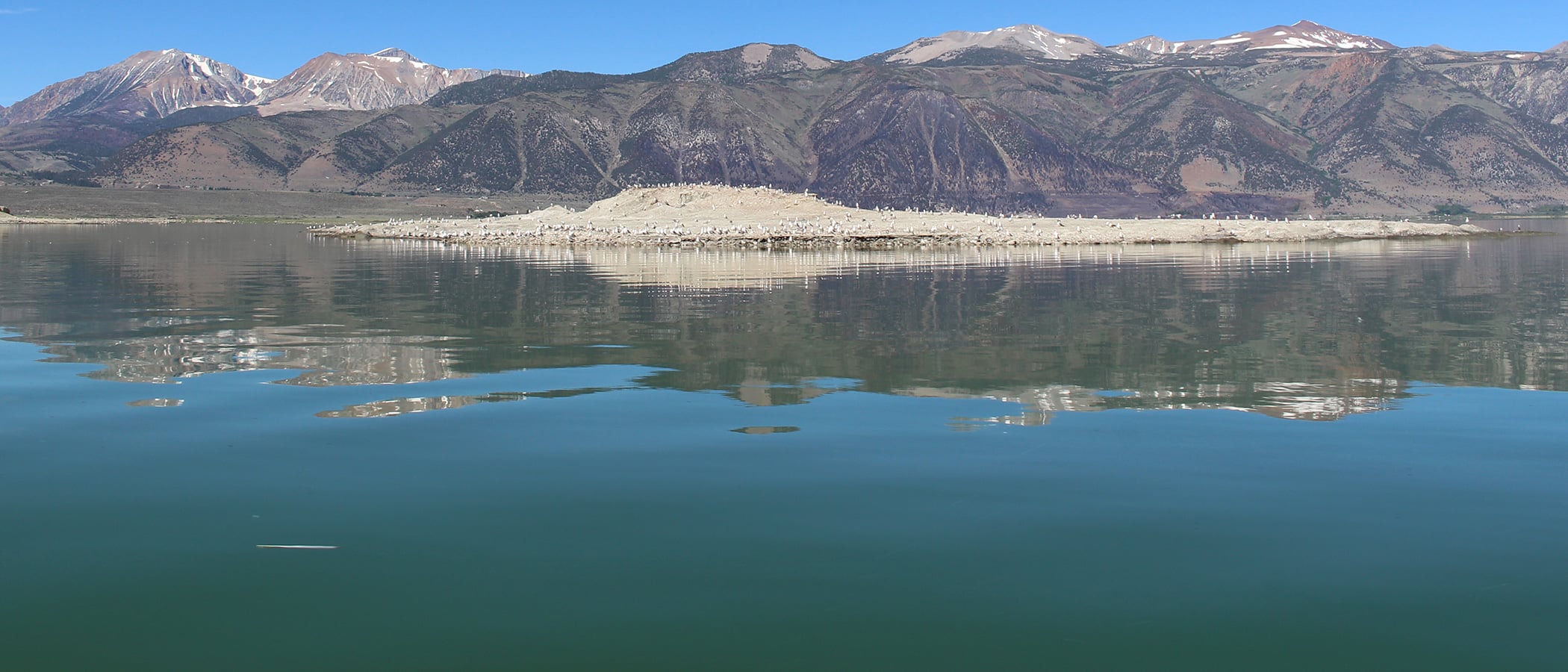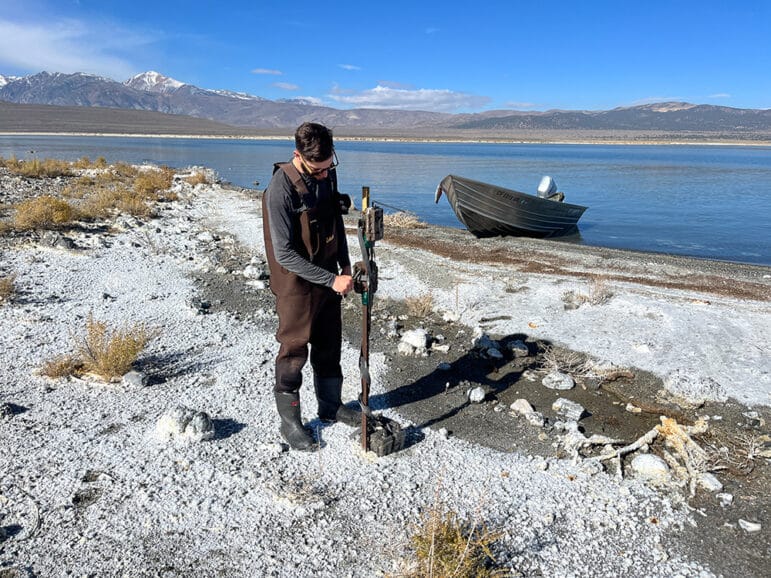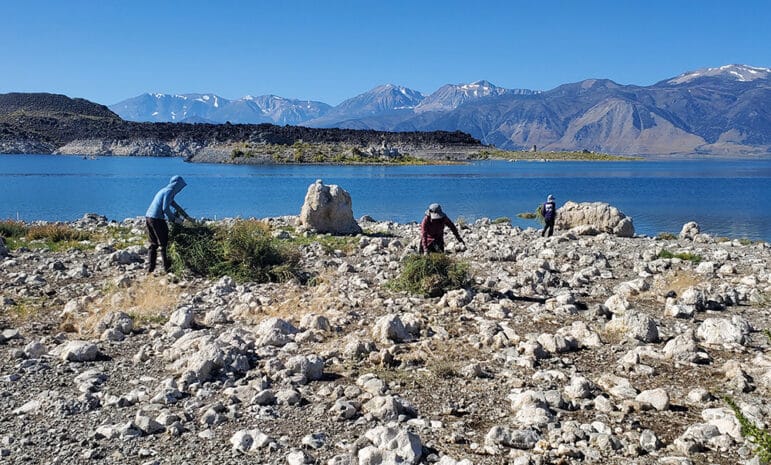
Species recovery depends on raising Mono Lake
Mono Lake rose an impressive amount in 2023 and so too did the productivity of nesting California Gulls. According to the Point Blue Conservation Science report, “Population size and reproductive success of California Gulls at Mono Lake: 2023,” productivity (chicks fledged per nest) increased, exceeding the long-term average and dramatically rebounding from the previous year.
Big winter rescues gulls
After continued stream diversions and drought pushed the lake to a critically low level in 2022, the news about the gulls was welcome. The low lake had exposed the gulls to predation via a landbridge, and the Mono Lake Committee planned to rebuild the gull protection fence across the landbridge to prevent coyotes from reaching nesting gulls. Fortunately for the gulls, record snowfall in the Mono Basin and a rising lake reduced the urgent need for the fence in early 2023. Wildlife camera surveillance and a follow-up survey by Point Blue after the 2023 nesting season did not detect any evidence of coyote predation, and by September, Mono Lake had risen enough to protect the gulls from predation into 2024. While this dire threat to the gull colony was averted for the second time in six years, it has been a recurring problem that has plagued California Gulls for decades.

Shrimp factors and a green Mono Lake
Coyotes are not the only threat to California Gulls as water diversions continue to keep the lake too low. In 2022, the gulls endured a near-complete collapse in productivity across all nesting sites at Mono Lake. There are a handful of likely contributing causes, including suspected coyote predation on the Paoha Islets. However during 2022, Mono Lake was critically low, salinity was high, and the lake remained a persistent, turbid green due to high densities of phytoplankton. In mid-June 2022, adult brine shrimp (Artemia monica) abundance was five times lower than it was the previous year, and Point Blue stated in their 2022 report, “We believe that adult [gull] fitness and inability to procure sufficient food resources to provision young is probably the most likely cause of the poor chick production.”
With Mono Lake remaining artificially low, causing phytoplankton to persist throughout the water column in recent drought years, there are impacts on the reproductive timing, success, and abundance of Artemia. Point Blue observed in their report, “The relationship between brine shrimp abundance and timing and gull chick production is not fully understood.” This is an important question that requires further study, as it also has consequences for other birds like Eared Grebes. Dr. John Melack from UC Santa Barbara, who leads the limnological monitoring on Mono Lake, is pursuing the green lake issue, assisted by grant funding obtained by the Committee through the California Department of Fish & Wildlife.
Artemia distribution and abundance data was not available in time for the 2023 gull report, but conditions in Mono Lake were very different last summer with large freshwater inputs, lower salinity, and observations of abundant Artemia.

Low lake keeps gulls off Negit and prevents recovery
Even with a bump in productivity, the 24,646 gulls nesting last year was the third-lowest number recorded since Point Blue began monitoring the breeding colony 41 years ago; the 2010–2022 average is 33,418. The 2023 report states, “Despite substantial annual variation in nesting population at Mono Lake, there is a clear long-term declining trend in the population size.”
Throughout the entire four-decade span of Point Blue research and prior, California Gulls have struggled to survive and adapt to a declining, or chronically depressed, lake level caused by continuing water diversions. Gulls have briefly returned to Negit Island, their original nesting habitat, only to be repeatedly driven off, ravaged, or threatened by coyotes crossing the landbridge and shallow water. Gulls have returned to raise chicks, year after year, in an ecologically compromised system that has remained, on average, ten feet below the State Water Board’s Public Trust management level of 6,392 feet. Salinity is high, and lake and brine shrimp productivity are vulnerable to drought cycles and large inputs of fresh water from big winters.
Four decades of research data shows us that California Gulls are both resilient and opportunistic, but they are not invincible. In 1994, the State Water Board concluded, “Based on the evidence in the record… At a lake level of 6,384′ or higher, gulls will have abundant nesting habitat on Negit Island and several of the islets.” The wait to verify this conclusion continues—only after Mono Lake rises and persists above 6,384 feet on its way to the 6,392-foot Public Trust management level can we begin to measure recovery.
This post was also published as an article in the Winter & Spring 2024 Mono Lake Newsletter. Top photo by Sara Matthews.
